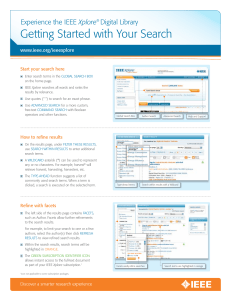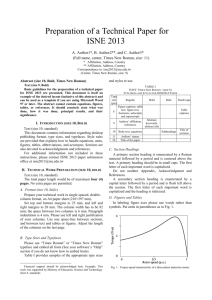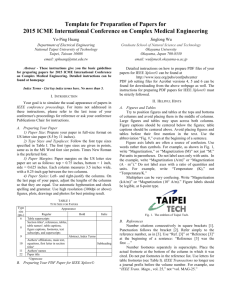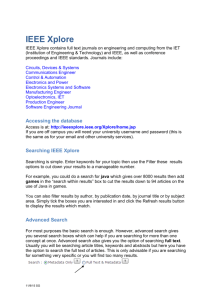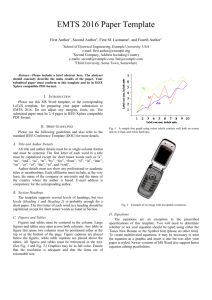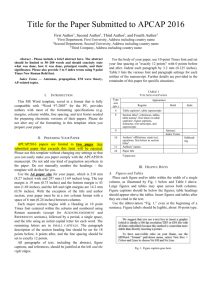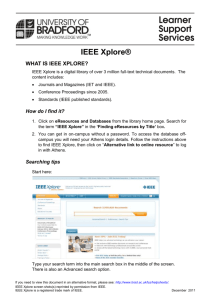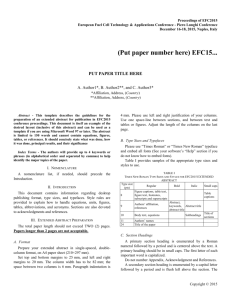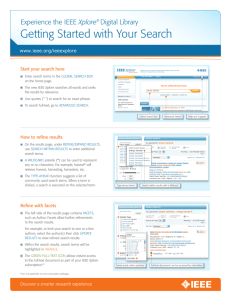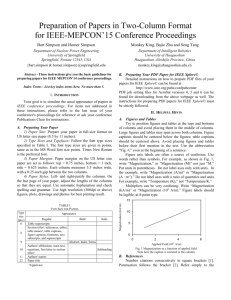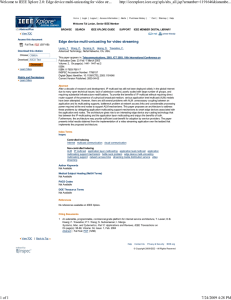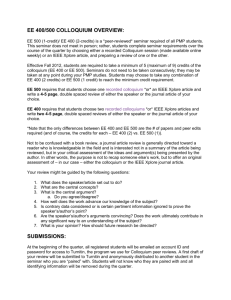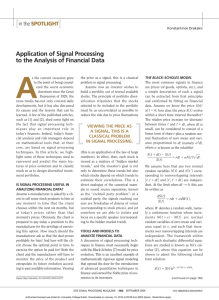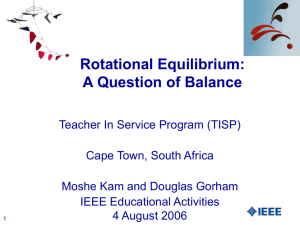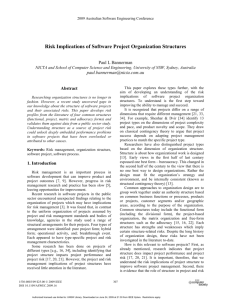Abstract Template (doc format)
advertisement
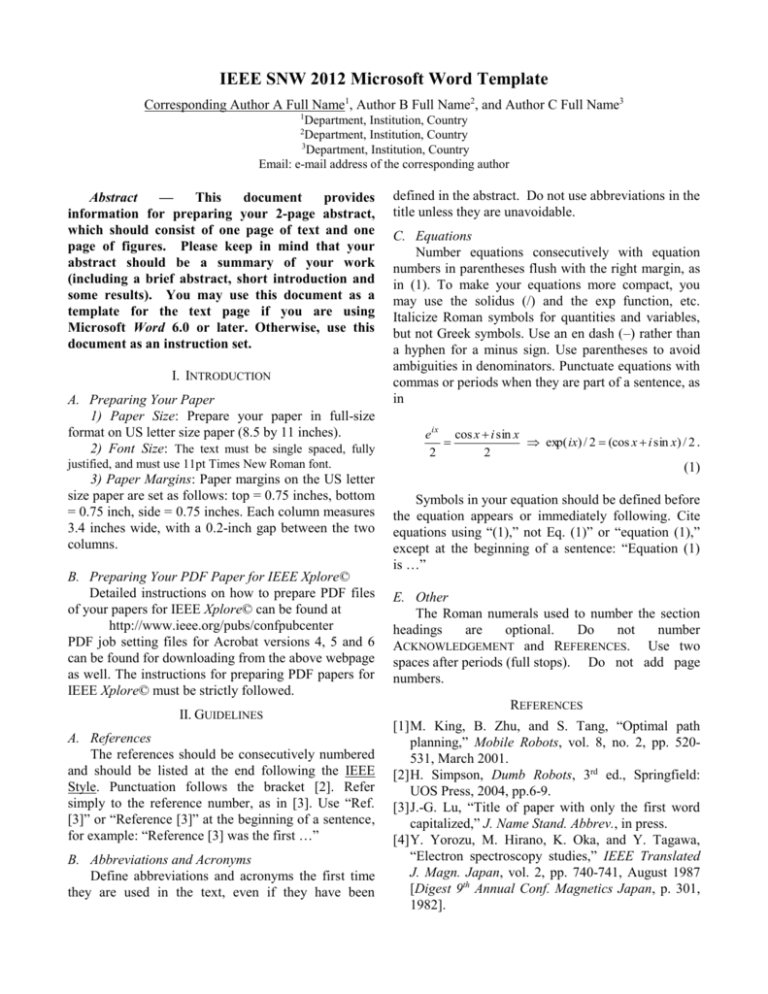
IEEE SNW 2012 Microsoft Word Template Corresponding Author A Full Name1, Author B Full Name2, and Author C Full Name3 1 Department, Institution, Country Department, Institution, Country 3 Department, Institution, Country Email: e-mail address of the corresponding author 2 Abstract — This document provides information for preparing your 2-page abstract, which should consist of one page of text and one page of figures. Please keep in mind that your abstract should be a summary of your work (including a brief abstract, short introduction and some results). You may use this document as a template for the text page if you are using Microsoft Word 6.0 or later. Otherwise, use this document as an instruction set. I. INTRODUCTION A. Preparing Your Paper 1) Paper Size: Prepare your paper in full-size format on US letter size paper (8.5 by 11 inches). 2) Font Size: The text must be single spaced, fully justified, and must use 11pt Times New Roman font. 3) Paper Margins: Paper margins on the US letter size paper are set as follows: top = 0.75 inches, bottom = 0.75 inch, side = 0.75 inches. Each column measures 3.4 inches wide, with a 0.2-inch gap between the two columns. B. Preparing Your PDF Paper for IEEE Xplore© Detailed instructions on how to prepare PDF files of your papers for IEEE Xplore© can be found at http://www.ieee.org/pubs/confpubcenter PDF job setting files for Acrobat versions 4, 5 and 6 can be found for downloading from the above webpage as well. The instructions for preparing PDF papers for IEEE Xplore© must be strictly followed. II. GUIDELINES A. References The references should be consecutively numbered and should be listed at the end following the IEEE Style. Punctuation follows the bracket [2]. Refer simply to the reference number, as in [3]. Use “Ref. [3]” or “Reference [3]” at the beginning of a sentence, for example: “Reference [3] was the first …” B. Abbreviations and Acronyms Define abbreviations and acronyms the first time they are used in the text, even if they have been defined in the abstract. Do not use abbreviations in the title unless they are unavoidable. C. Equations Number equations consecutively with equation numbers in parentheses flush with the right margin, as in (1). To make your equations more compact, you may use the solidus (/) and the exp function, etc. Italicize Roman symbols for quantities and variables, but not Greek symbols. Use an en dash (–) rather than a hyphen for a minus sign. Use parentheses to avoid ambiguities in denominators. Punctuate equations with commas or periods when they are part of a sentence, as in eix cos x i sin x exp( ix) / 2 (cos x i sin x) / 2 . 2 2 (1) Symbols in your equation should be defined before the equation appears or immediately following. Cite equations using “(1),” not Eq. (1)” or “equation (1),” except at the beginning of a sentence: “Equation (1) is …” E. Other The Roman numerals used to number the section headings are optional. Do not number ACKNOWLEDGEMENT and REFERENCES. Use two spaces after periods (full stops). Do not add page numbers. REFERENCES [1] M. King, B. Zhu, and S. Tang, “Optimal path planning,” Mobile Robots, vol. 8, no. 2, pp. 520531, March 2001. [2] H. Simpson, Dumb Robots, 3rd ed., Springfield: UOS Press, 2004, pp.6-9. [3] J.-G. Lu, “Title of paper with only the first word capitalized,” J. Name Stand. Abbrev., in press. [4] Y. Yorozu, M. Hirano, K. Oka, and Y. Tagawa, “Electron spectroscopy studies,” IEEE Translated J. Magn. Japan, vol. 2, pp. 740-741, August 1987 [Digest 9th Annual Conf. Magnetics Japan, p. 301, 1982].
